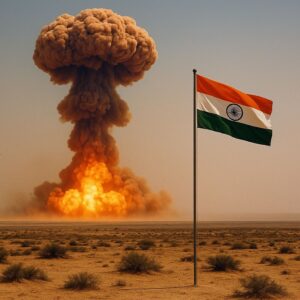In the arid heat of Rajasthan’s Pokhran desert, a seismic shift occurred beneath the surface—both literally and geopolitically. On May 11, 1974, India detonated its first nuclear device under the codename “Smiling Buddha,” marking its dramatic entry into the nuclear club. It was a moment of national pride, strategic assertion, and global unease.
For India, the test was framed not as an act of aggression, but as one of self-reliance and security. The country had endured centuries of colonial subjugation and, more recently, volatile border tensions with neighbors like China and Pakistan. To many Indians, the nuclear test wasn’t about warfare—it was about dignity, deterrence, and technological competence.
But the international reaction was far from celebratory. The test disrupted the carefully managed equilibrium of Cold War-era nuclear diplomacy. Western powers, particularly the United States and Canada, viewed India’s move with deep concern. Sanctions followed. Trust eroded. And yet, India stood its ground, arguing for a nuanced distinction: a peaceful nuclear explosion, not a weaponization initiative—at least not at first.
The broader implication of May 11, 1974, lies in its lesson about power—who holds it, who gets to define its use, and who is permitted to claim it. Nuclear capability remains a double-edged sword: a symbol of national strength on one side, and a lingering shadow over humanity on the other.
India’s test was not merely a scientific feat; it was a statement to the world: “We will not be left behind.” And in that assertion, the global nuclear landscape was irreversibly altered.

